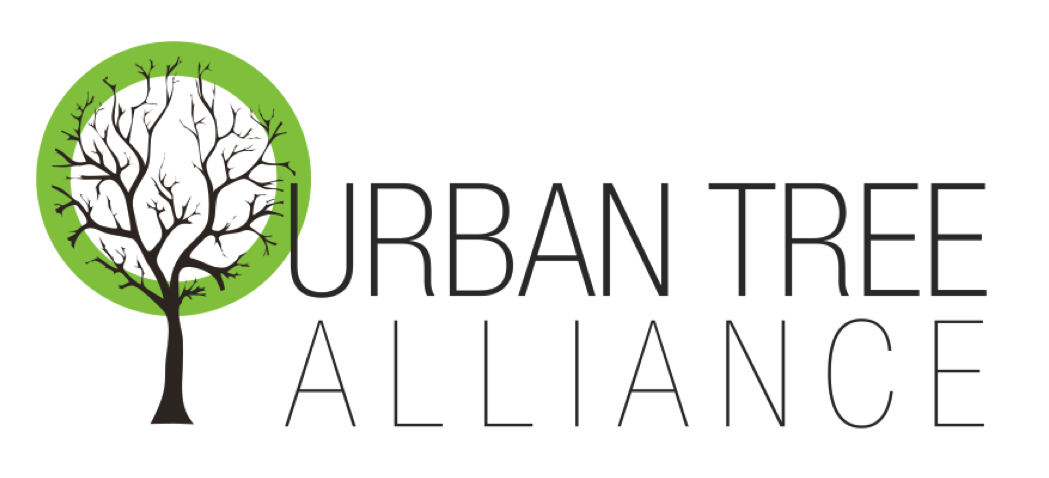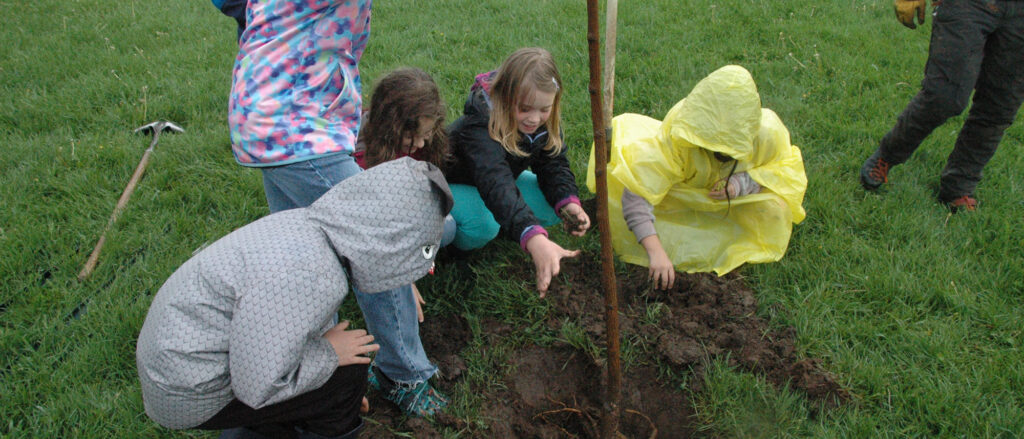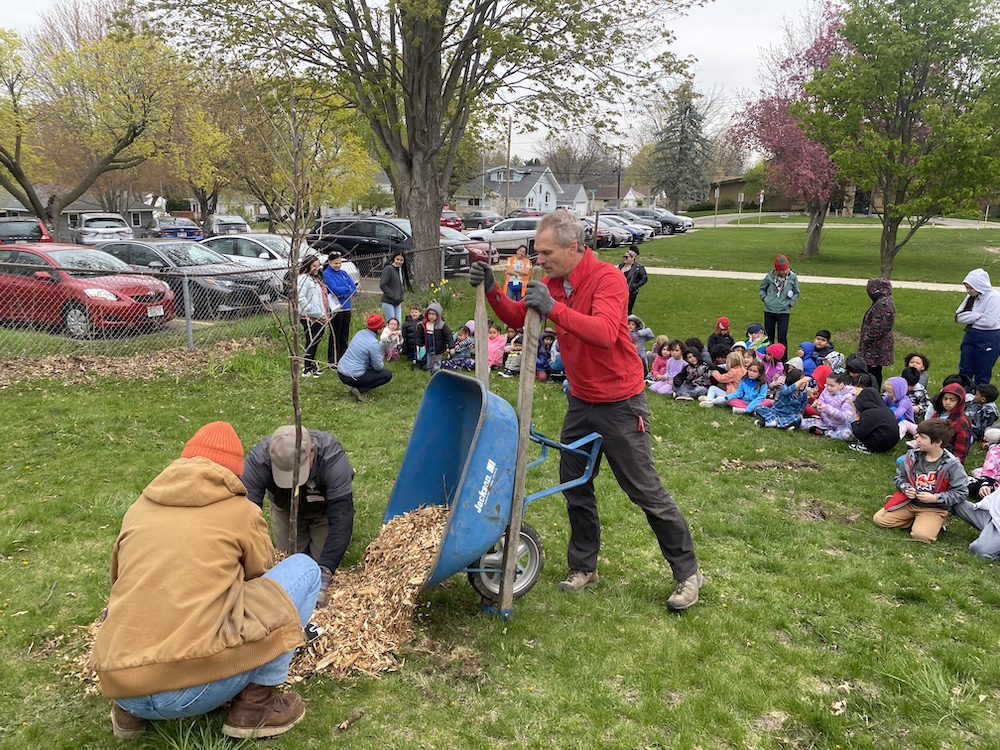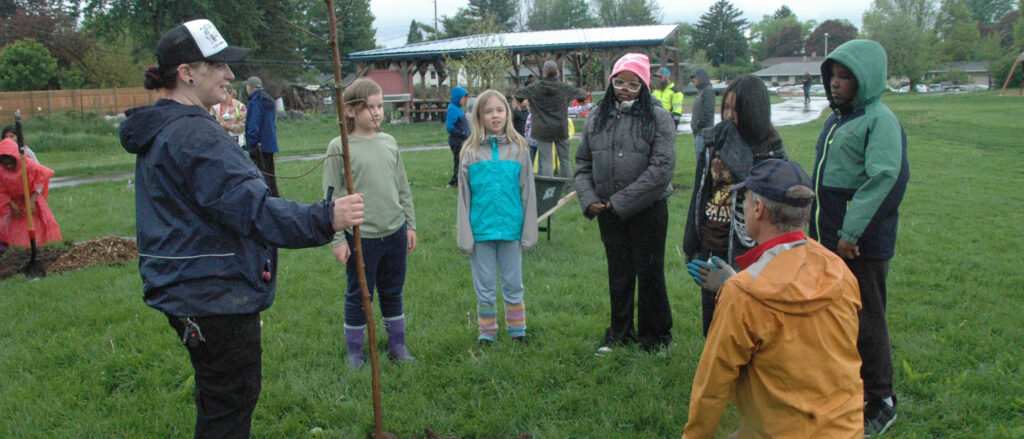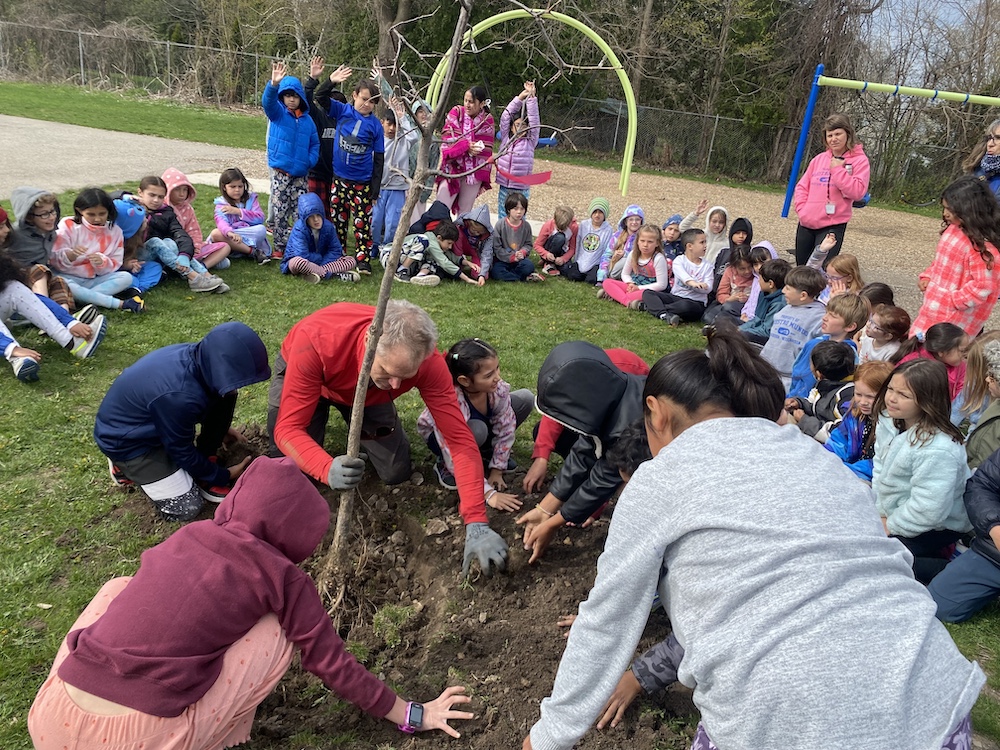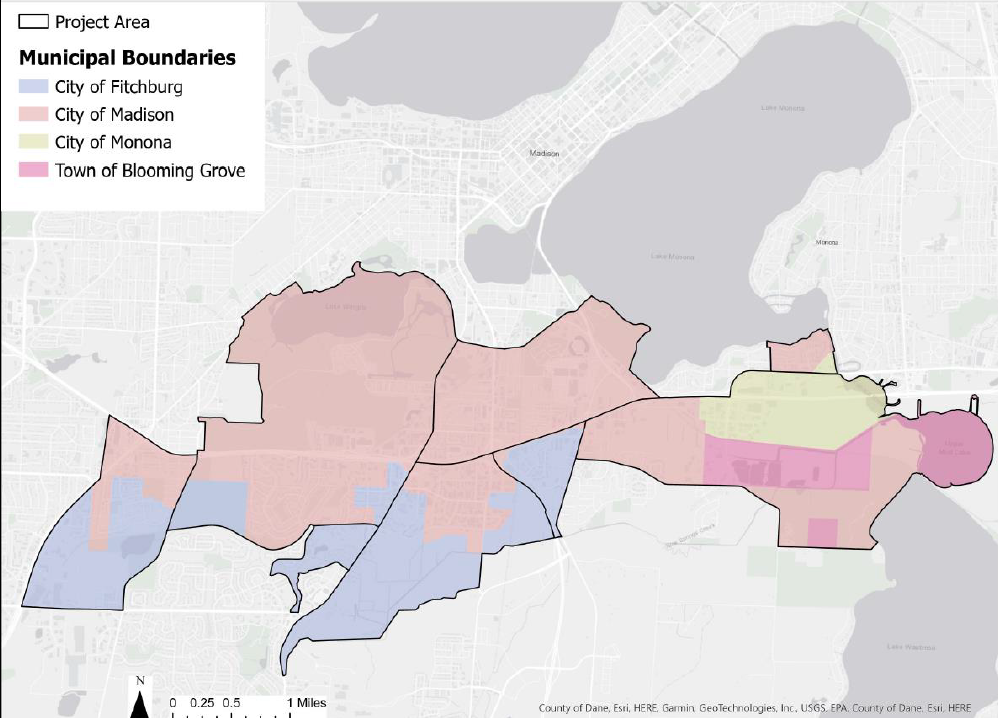Grow Your Community’s Canopy with Free Trees!
Thanks to a generous grant from the Madison Community Foundation, the Urban Tree Alliance (UTA) is thrilled to announce an exciting new opportunity for property owners in the Greater Madison area. We’re offering free trees throughout Madison’s South Side community to help grow and preserve our urban forest canopy. All property types within the project boundaries are eligible and encouraged to apply.
To request a tree please click here.
Join the Movement to Green Our Neighborhoods!
At UTA, our mission is to enhance and expand the urban forest canopy across Greater Madison. We’ve teamed up with local partners like Wisconsin EcoLatinos and Operation Fresh Start to bring this initiative to life. We’ve also received financial support from the Greater Madison foundation, the MGE foundation, and marketing support from Greenleaf Media. Through this project, we will plant 160 trees per year in South Side neighborhoods, creating a greener, healthier, and more beautiful community for all.
Madison’s South Side community is home to nearly 25,000 residents. This area encompasses a diverse range of neighborhoods and is a focal point for various community development and environmental initiatives. The population reflects a rich cultural and socioeconomic diversity, making it an ideal area for urban forestry projects that aim to enhance the local environment and improve quality of life for all residents.
Who Can Apply?
Everyone! Whether you’re a homeowner, a business owner, a school administrator, or a government property manager, you can apply for free trees to beautify your space and contribute to our community’s green future.
Why Participate?
- Beautify Your Property: Enhance the aesthetic appeal of your home, business, or community space.
- Environmental Impact: Trees improve air quality, reduce heat island effect, and support local wildlife.
- Economic Impact: Reduce energy costs, increase property values, improve air quality and reduce potential medical costs, reduce stormwater and flood damage costs.
- Community Benefits: Join a city-wide effort to create a more sustainable and vibrant urban environment.
How It Works
- Apply for Free Trees: Simply fill out our application form to request free trees for your property.
- Expert Guidance: Receive professional advice on species selection and planting site options.
- Community Events: Participate in tree planting events and educational activities to learn about tree care and urban forestry.
- Ongoing Support: Get continued support for maintaining and caring for your new trees through our developing neighborhood tree ambassador program.
Get Involved Today!
Fill out the “Tree Request Form” to apply for free trees. One of our employees will follow-up with you to survey your property for potential planting sites and tree species suggestions. Don’t forget to subscribe to our newsletter and follow us on FB and Instagram to learn more about upcoming planting events and how you can contribute to our canopy growth efforts.
Together, let’s grow a greener future for our community, one tree at a time. Apply now and be part of the Urban Tree Alliance’s mission to expand and preserve Madison’s urban forest canopy in the South Side community!
How your organization can help
Together, let’s grow a greener future for our community, one tree at a time. We have identified your organization as a potential partner within the community that can support this work in a number of ways. We are seeking community connections to spread the word through newsletters, community events, community bulletin boards, strategic meetings with large property owners, and more. If your organization is interested in supporting this work, please schedule a meeting with Beca Borkowski, our Community Forest Coordinator, at bborkowski.uta@gmail.com.
FAQs
Q: Am I eligible to receive free trees?
Yes, as long as 1) you live in one of the selected neighborhoods, and 2) you have enough space on your property for a new tree to spread out and fully develop.
An ideal site will have at least thirty feet of space free of obstructions (please see this diagram of a typical yard). But if you are short on space, please contact us anyways, and we will do our best to fit a tree into your yard!
Please note that we do require Canopy Project trees to be planted at least five feet outside the drip line of existing trees (click here for a diagram). In other words, we will not plant Canopy Project trees underneath existing ones. Our goal is to place the trees where they can have the largest impact on the environment and the community.
Q: How does the program work?
We will help you select the tree and choose the site. We will also either deliver the tree or plant it for you according to your preferences.
The first step to receive your free tree(s) is to complete a tree request form. After receiving your request we will send you a confirmation email that includes a site visit date. Site visits take place between 1 and 5 p.m. on weekdays (please note that we are unable to schedule an exact time). You do not need to be home.
During the site visit, we will determine ‘the right tree for the right place’ by taking into account yard characteristics such as sun exposure, soil type, moisture levels, neighboring trees, and nearby infrastructure. We will create a list of recommended species that would best fit your site and mark potential planting locations with white flags. If you have an exact spot in mind for your new tree, you may wish to place a marker (such as a stake labeled “TREE” or small homemade flag) in that spot prior to our visit.
Next we will contact you by phone or email to discuss the proposed planting locations and to share the list of recommended species (usually 3-5 choices, based on availability). We will also provide you with a short description of each species. Either you can let us choose the species for you, or you can narrow the list down to your top two choices.
Finally, we will schedule the planting date. Depending on your preferences, UTA staff and volunteers will either plant the tree for you or deliver the tree for you to plant yourself. You will also receive mulch and instructions for planting, watering, and caring for your new tree. Even if you choose to plant the tree yourself, we will contact digger’s hotline for you.
Q: How big are the trees right now?
The trees are two-and-a-half to seven feet tall (height varies by species). They are planted in five gallon containers. You can see our trees in the photos above!
Q: Which species are being planted?
An important goal of this program is increasing the species diversity of Madison’s urban forest. A diverse urban forest is more resilient and less susceptible to damages caused by diseases and pests, such as the emerald ash borer.
Our current (2018) planting list includes chinquapin oak, bur oak, swamp white oak, pecan, yellow birch, sour gum, sycamore, catalpa, tulip tree, ironwood, Ohio buckeye, and redbud. Please note that not all species are available at all times.
Q: Can I choose the species?
We will work with you to choose the best species for your property. Through the tree request form you will have the opportunity to tell us what features of a tree, such as whether it produces food for wildlife or has good fall color, are important to you. When we visit your property and examine site characteristics we will create a list of suitable trees for your yard (usually 3-5 choices, based on availability). You will get one of your top two tree choices from this list.
Why do we do it this way? Because understanding site characteristics is a critically important part of planting trees to ensure 1) they remain healthy for years to come and 2) don’t cause problems for you or others in the future. For example, bur oaks can adapt to most types of soil, whereas American beeches are temperamental and require precise growing conditions. Ironwood can be placed quite close to buildings and pavement, while sycamores need a wide berth. We are here to help you make the best possible choice!
Also, please note that the Madison Canopy Project will only plant small trees (serviceberries, pagoda dogwoods, and redbuds) if our staff determines there is not enough space in a yard for a larger tree because of obstacles such as power lines and buildings.* Larger trees have more environmental, economic, and social benefits, so we plant them whenever possible!
*Due to limited resources we rarely plant small trees. If there is not enough space for a larger tree due to existing large trees or vegetable gardens, we will not offer a small tree.
Q: Who will plant the trees?
You have two choices. You can plant it yourself or we can plant it for you.
Q: Can we plant a tree at a local school, park, or apartment complex?
We will certainly try to make it happen! As long as we receive all the required permissions, we are open to planting trees near apartment buildings, at schools or churches, in parks and other open spaces – pretty much anywhere a tree is likely to thrive. Check out our Citizen Forester Program and contact us to find out more.
Q: How many trees have you planted so far?
We planted two hundred trees in 2014 (our first year with the Madison Canopy Project). We will be trying to triple that number by the end of 2015!
Q: How did you select the target neighborhoods?
Neighborhoods were selected based on existing canopy cover. Neighborhoods with relatively sparse canopies compared to the Madison as a whole have been given priority.
Q: How can you afford to plant trees for free?
We also rely on grants and donations from groups and individuals to support the Madison Canopy Project. We have received funding from the Wisconsin DNR, Madison Gas and Electric, the Dane County Bar Association, the Madison Community Foundation, and the Bock Foundation to pay for trees, transportation costs, staff, and other expenses.
Remember, the more donations we receive, the more trees we can plant! If you find this program valuable, please consider making a tax-deductible donation.
This project is sponsored by the Madison Community Foundation and the Wisconsin Department of Natural Resources. Development of this webpage was funded in part by an urban forestry grant from the State of Wisconsin Department of Natural Resources Forestry Program as authorized under s. 23.097, Wis. Stat.
